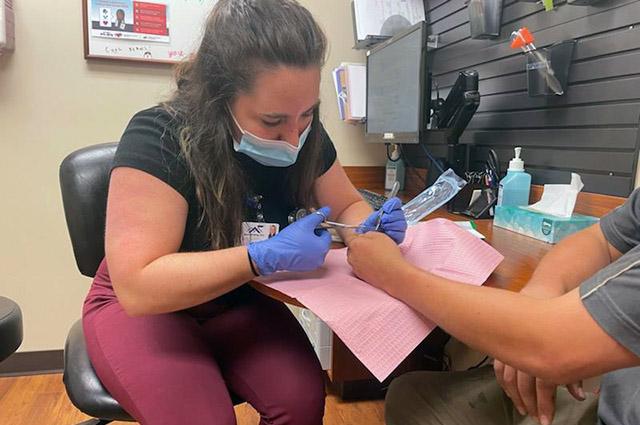
Med students given a taste of rural medicine more likely to return
UW med school alumni were twice as likely to practice in rural areas if they trained at rural sites as medical students, a study shows.
UW medical school alumni who had trained as medical students in rural areas were almost twice as likely to set up their practices in a rural location, a new UW Medicine led study has found. The study was published this month in the Journal of the Association of American Medical Colleges.
A survey of 1,172 UW School of Medicine alumni who graduated between 2009 and 2014 looked at the number who participated in the Rural Underserved Opportunities Program, or RUOP. The survey found that a significant number who participated in RUOP eventually established their practices in rural communities. Of the 1,172 graduates, the study tracked 994 UW medical school alumni in the analysis because their current physician work addresses could be traced after graduation.
Of those students, 570 participated in RUOP training, and 111 were currently working in rural communities after their training, the study found.
The researchers concluded that “educational programs are crucial public health interventions that can promote health equity through proper distribution of health care workers across rural regions of the U.S.”
“This study provides a promising connection between the RUOP program and the medical graduates’ decision to work in rural areas, said lead author Arati Dahal, a researcher with Center for Health Workforce Studies and the Department of Family Medicine at the UW School of Medicine. “If more funds are directed toward supporting such programs, and as well as steps such as robust scholarship opportunities directed toward attracting more medical students to enroll in programs like RUOP, it is possible to ameliorate the rural physician workforce shortage that has been a major concern for those involved in health care delivery in the U.S.”
The study noted that “there is a broadly recognized and persistent rural physician shortage in the U.S. As of 2021, 61% of the designated primary care shortage areas were in rural areas. This rural physician workforce shortage shows no sign of ameliorating, the report stated, “especially considering the physician burnout with COVID-19 and the aging rural physician population."
“Compared to urban areas, the rural communities experience higher rates of chronic illness, more maternal and infant mortality, and lower life expectancies,” the authors wrote.
Established in 1989, RUOP offers medical students a four-week rotation in rural areas of Washington, Wyoming, Alaska, Idaho and Montana. The students participate between the first- and second-year of medical school to get an early introduction to rural health care. While in the program, students work alongside a primary-care physician. They also learn about the local community, as well as complete a public health care project within the community.
The mean age of the medical students was 29 years, with 53.9% being female. About 70% were white. The students who grew up in rural areas were more likely to have been interested in participating in RUOP and to later choose to practice in a rural area, the review found.
Dahal stressed that one of the important limitations of this study is that the students were not randomized to RUOP and non-RUOP arms and therefore, the research could not definitively claim a truly causal relationship between RUOP and a decision to practice in rural areas. Nonetheless, she added, by using a robust statistical approach and controlling for demographic, initial interest and future career intent variables, the researchers were able to build a strong empirical connection between the medical students’ participation in RUOP and their decision to work in rural areas of the country.
While most medical schools do not offer long-term rural programs in their curriculum, RUOP could be a model “and an example of how it is also possible for medical schools to create high-impact and influential rural training programs for a large number of students with a relatively small investment,” the researchers said.
“The findings of this study emphasize that educational programs and policies are crucial public health interventions that can promote health equity through proper distribution of health care workers across rural regions of the country,” the report concluded.
Written by Barbara Clements - bac60@uw.edu, 253-740-5043
For details about UW Medicine, please visit http://uwmedicine.org/about.